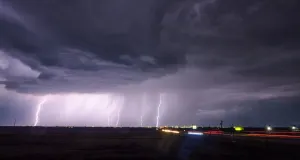
Methane emissions have been greatly underestimated, says study
Over a 20 year period, methane is over 80 times more potent than carbon dioxide.
Methane, a powerful greenhouse gas, has more than doubled in concentration in our atmosphere since preindustrial times and the amount of this gas that we inject into the atmosphere has become a topic of debate.
A recent study conducted by researchers from several institutions and led by Benjamin Hmiel, a scientist from the University of Rochester, has found that we have been underestimating the amount of methane that has been produced from the extraction and use of fossil fuels.
The study was published in Nature and shows that methane emissions are between 25 and 40 per cent higher than initially assumed. Even though carbon dioxide is the main greenhouse gas that is released by human activities, methane is the second most prominent greenhouse gas but is significantly more potent than carbon dioxide.
Over a 20 year period, methane is over 80 times more potent than carbon dioxide because of its ability to trap heat, which is why the findings of this study are so alarming.

Credit: NOAA
Values of methane concentrations used in previous studies were obtained from an inventory that collects global methane data, but the data source for this recent study comes from the analysis of air trapped in ice cores from Greenland and Antarctica dating back to 1750.
The extraction and distribution of gas, coal and oil worldwide are responsible for almost half of all man-induced methane emissions. Natural gas, although less carbon intensive than oil and coal, is driving the increase in global energy demand and the International Energy Agency, which is a forum of 30 countries, states that global gas demand grew by 4.6 per cent in 2018.
Scientists can quantify the total amount of methane released each year and approximately how much is of biological or fossil origin, but finding out which part comes from natural sources as opposed to human activity is more difficult.
There are two types of methane emissions, each with its own molecular signature, and both can occur naturally or be generated by human activity. For example, biological methane is released from undisturbed wetlands, but also from landfills, rice fields and especially the belching cattle.

Credit: University of Rochester illustration/ Michael Osadciw
Joeri Rogelj of Imperial College London, an expert on carbon budgets adds, "It shows us where we can act on climate change," and which are the amounts of greenhouse gases that can be emitted without passing a certain temperature threshold.
With files from Isabella O'Malley











